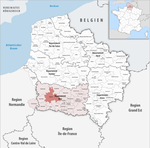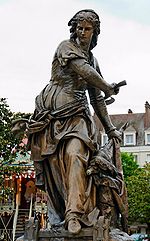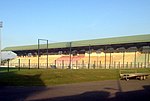Roman Catholic Diocese of Beauvais
3rd-century establishments in Roman GaulChristianity in OiseRoman Catholic dioceses in France

The Diocese of Beauvais, Noyon, and Senlis (Latin: Dioecesis Bellovacensis, Noviomensis et Silvanectensis; French: Diocèse de Beauvais, Noyon et Senlis) is a Latin Church ecclesiastical territory or diocese of the Catholic Church in France. The diocese encompasses the department of Oise in the region of Hauts-de-France. The diocese is a suffragan of the metropolitan Archdiocese of Reims. The current bishop is Jacques Benoit-Gonnin, appointed in 2010.
Excerpt from the Wikipedia article Roman Catholic Diocese of Beauvais (License: CC BY-SA 3.0, Authors, Images).Roman Catholic Diocese of Beauvais
Rue Saint-Pierre, Beauvais
Geographical coordinates (GPS) Address Nearby Places Show on map
Geographical coordinates (GPS)
| Latitude | Longitude |
|---|---|
| N 49.432 ° | E 2.08118 ° |
Address
Rue Saint-Pierre 67
60000 Beauvais
Hauts-de-France, France
Open on Google Maps









